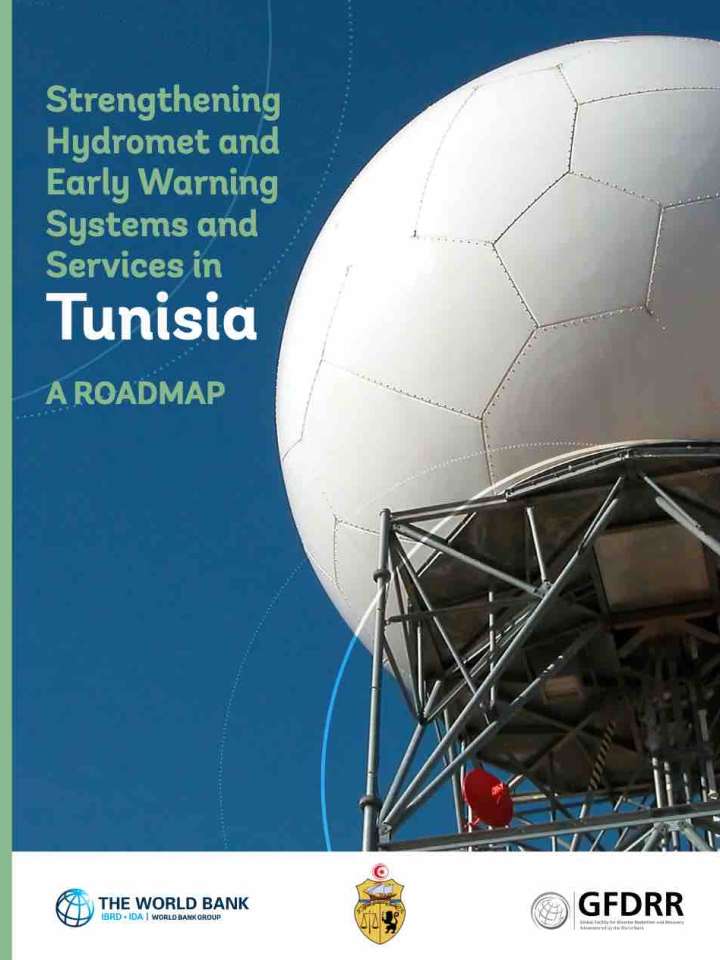Strengthening hydromet and early warning systems and services in Tunisia: A roadmap
This roadmap uses a series of progress models to measure Tunisia's Meteorological and Hydrological Service Providers’ capacities in several key areas: service delivery, observation and telecommunication, and modeling and forecasting. Tunisia is highly vulnerable to natural hazards. Hydrometeorological (Hydromet) hazards, such as various types of floods, droughts, heat extremes and heatwaves, and sea level rise pose a direct threat to lives; impact livelihoods; and retard development. Underlying processes, including climate change, population growth, land use changes, and urbanization, mean that growing numbers of Tunisians face hydrometeorological hazards, especially in coastal areas.
National Meteorological and Hydrological Services (NMHSs) provide Hydromet and early warning services and tailor them to different users. Given current and predicted Hydromet-related hazards, and as in other countries of the Middle East and North Africa (MENA) region, Tunisia needs Hydromet information to protect people, economies, and development gains. To contain growing economic losses from hydrometeorological hazards, adapt to climate change, and guide economic development across different sectors, Tunisia needs to invest in its multi-hazard early warning systems, and hydromet services.
Explore further
